At a glance
Discover my interview with Paula Begoun, creator of the American skincare brand Paula’s Choice, and a true cosmetics legend!
I had the great opportunity of meeting and interviewing Paula Begoun, founder of the American skincare brand Paula’s Choice, when she came to Paris in May.
I was very keen to hear about her story, her debut, as well as her best-selling books and her website, Beautypedia. I also wanted to understand why she decided to create her own skincare brand, Paula’s Choice.
Paula’s Choice has a fairly unique position in the cosmetics industry, and this since its debut in 1995. Paula has always been very critical of false promises made by companies in this industry and has gained a reputation of being very outspoken. In the 1990s, famous American TV host Oprah Winfrey even called her the “cosmetic cop” and it’s true that this nickname fits her like a glove!
Paula’s leitmotif?
Help her readers (and later her customers with her ‘Paula’s Choice’ line) to choose the best cosmetic products for them by understanding which ones are really effective! Paula refuses fake marketing claims and irritating ingredients that can ultimately do more damage than good to the skin.
She used all these principles in the brand she founded in 1995, Paula’s Choice. The products from the brand have short formulas, without superfluous ingredients or irritants (no perfume, no essential oils, no alcohol…). The packaging is simple and in line with the brand’s promises: soft and effective skincare products!
Even though I may not agree with all the brand’s principles, I like this very “American” approach to cosmetics, with an emphasis on the use of very active, near medical, ingredients, which have proven to be very effective through a lot of research.
I’m going to be honest, I can’t only use Paula’s Choice products in my routine (efficiency is great but I also crave a little bit of sensoriality with some of my products!). That being said, the products I have chosen to try from this brand definitely convinced me so far! I already did reviews on some of them (the Niacinamide booster and Vitamin C15 Booster) and I plan to introduce others in my routine in the upcoming months.
In this discussion with Paula, I also touched on other topics that were close to my heart: the “clean beauty” trend and the demonization of certain ingredients, the differences in consumer behaviour between different markets around the world. But I was also interested in more pragmatic things like Paula’s advice on taking good care of her skin with common sense 😉
Here is the transcript of the interview!
My conversation with Paula Begoun:
Bonjour Paula! Could you tell me how you got started in the beauty industry and how you became interested in cosmetics in the first place?
Paula Begoun: So everything feels like a bit of an accident. Like a surprise. I’m surprised I’m sitting here in Paris talking to my international team… Because it was never so clear, or a goal. But as a very young girl, I struggled terribly, with terrible skin, from the age of 11 when I got my period. And I started acne, oily skin, terrible acne and I also had eczema.
I spent years of my teenage life, looking, hoping skincare, doctors, anything and everything. And I still had terrible skin. At the very least, it didn’t get better. And at the worst, it got worse, red and inflamed. And I remember back in the day thinking, well, if it hurts, it must be good. In fact, a lot of people still believe that: if you don’t feel anything, nothing’s happening.
So when I went to university, to send myself through school, I was a makeup artist. One of the nicest things my family allowed, was when I was a girl, they let me wear makeup to cover up my acne and I just got very good. I could reproduce anything I saw in a fashion magazine. So that got me through three and a half years of university, but I always made more money doing makeup and waitressing to do school and then, when I left school I just stayed doing makeup. I had a science background in college, but I liked paying rent. I was very successful as a makeup artist back east in the United States.
So I just had a passion to figure out what to do about my skin. Always. And I had the science background, right? So I had some understanding of anatomy and physiology and what was up to date at the time. And then in 1977, the most amazing thing happened in the United States. The FDA (the Food and Drug Administration in America) made it mandatory for cosmetics to have ingredients.
It was the first country! This was in 77. The next country was Australia in 95. And then Europe, not until like the mid-2000s. And Canada was 2010. Okay, so here I am in America. And I have a science background. I know the cosmetic counters. I know what dermatologists are doing. I know the journals. Not on Google. I mean, I’m in libraries, right? It took a long time for Google to show up. And all of a sudden, I could see what I was putting on my face.
Well, there was still a lot of homework to do, a lot more research to do. So that just started this path of wanting to know more, wanting to understand and I wrote my first book in 1984, called “Blue eyeshadows should be illegal”. And I did a TV show with Oprah. I got the nickname “The cosmetics cop” from her. 14 appearances later, and how many books later, in 1993, I thought I didn’t want to write any more books. I mean, back in the day, I wasn’t so fancy, where I had a team around me, I was writing them by myself.
I start thinking “Well, I love what I do. I don’t want to do that anymore, because it’s hell. But this is the industry I know. And I have a passion for it. I know some of the best cosmetic chemists because I’ve been using them as resources for my work.” And then friends, family and readers would say, you always say “This is good stuff” or “This is bad”. “Why don’t you just do your own thing?”
So in 1993, I started formulating products with a couple of cosmetic chemists. And launched Paula’s Choice on the internet in 1994.
It’s always been about the fact that nobody should be going through what I went through.
What were your main goals when you created Paula’s Choice?
P. B. : Pay mortgage!(laughs)
I wanted to continue doing what I did with my books, to help women. It’s always been about the fact that nobody should be going through what I went through. About women not having to struggle to find what works and what doesn’t, you know, to have to experiment. You shouldn’t have to experiment with bad products. Women asked me all the time, “But shouldn’t I just use what I like?” No, do not do that! Because we don’t know. When you don’t know that you’re liking something that’s bad. People like smoking! It’s not good! People like getting a suntan. That’s death! People like eating chocolate cake. I would eat chocolate cake 10 times a day. And look like the size of this room and die of a heart attack. We often like what isn’t good for us. And sometimes, it shows up on the face immediately. But mostly, you don’t know that you’re damaging your skin.
I didn’t want women to go through what I went through. I wanted them to have products that worked. And they didn’t have to experiment and search and start and go through using bad products. And so, that stayed the goal. It’s still the goal. Actually, it’s the most consistent thing I’ve done since I’ve been 22.
I think people know you for that. Paula’s Choice is not only a skincare brand, you also bring a lot of knowledge/ education. And that’s really important.
P. B. : Well, actually, you know, it’s funny you say that, because I started my brand, really because I didn’t want to write anymore. I wanted to continue my mission. I didn’t want to write anymore, but I couldn’t give up. I wrote I don’t know how many more books after I started my product line because I couldn’t give it up. That part of me that loved the research and the knowing and the understanding. That has just never gone away.
Did having a digital presence with your website, Beautypedia, help you in the development of Paula’s Choice?
P. B. : Beautypedia came after Paula’s Choice. Many years after. I actually think I was the first cosmetic company on the internet for certain. And do you know that saying “I’m the last man standing?” In other words, I think there were a couple of other cosmetic companies on the internet at the time, but they all went away.
Well actually, why did you choose to be online only, from the very beginning of Paula’s Choice? It looks like a very bold choice, especially at the time!
P. B. : You know, it didn’t seem very bold. So I couldn’t imagine what it would mean to have stores and having to train thousands of women. And for them to understand the complicated, crazy intense ever-changing world of skincare. And you know, when the salesperson last week was selling shoes, and now she’s at the cosmetic counter…
So the internet seemed like the best way to give information. Centralized, direct information, facts that I could change as the research changed. I didn’t need to be Estée Lauder, or Lancôme, I just had my mission and the internet felt like it served it still. I think it serves my customer best so that they can get the latest information. We can be very nimble about changing products, right? I don’t have to worry about 3 million products at the cosmetic counters around the world.
How do you manage criticism about objectivity when it comes to the reviews of your own products on Beautypedia?
P. B. : At first, I didn’t review Paula’s Choice products in my books or on Beautypedia, but then I got criticism for not including them so I did, and then I got criticism for including them. What is surprising to me is I’m the only cosmetic company in the world that recommends products other than my own, and I always wonder why other cosmetic brands aren’t criticized for not recommending products from other brands especially the brands the company owns.
Over the years any feedback I’ve received helps me understand my work better and helps me to make decisions about what I do. I strongly believe reviewing products from a research based perspective is important and thankfully I get far more positive feedback than negative feedback
You made a name for yourself and founded your business in the US. You’re launching the brand in Europe, I’d like to ask you a few questions about the differences you see between these two markets. Do you notice any differences in consumer behavior between Europe and the US?
P. B. : Everyone’s crazy. (laughs) Everywhere I go. And I have been very blessed, I get to travel the world.
Women around the world are passionate and confused. They think they know, or don’t know. They believe crazy things. They have the same desires for some concept of being beautiful. And I don’t see it different in any country I’m in. Sometimes it differs by age. Sometimes it differs by economics, you know, the West versus the East so to speak. But those lines these days are pretty blurred.
So I see everybody being pretty crazy. Beauty (and skincare) is a universally crazy world. And it has only gotten crazier. And it’s not helping anybody to take care of their skin. Yes, to me, it’s just tragic. Because that’s all we want!
How did you address the different legislations across markets (I’m thinking about some UV filters, for example, but in general, navigating between the various allowed, forbidden and regulated ingredients)? Can this lead to different formulas for the same product?
P. B. : For example, Japan is the trickiest country. We don’t sell in Japan, I don’t know that we will ever. Japan makes it very difficult to sell there for logistics. They just have some of the strictest, strangest regulations.
What we generally choose to do is just make the products as universal as possible. And when we can’t, or we don’t want to give up a product because it’s just too good, and it’s not my problem that the EU is crazy, or China’s crazy, or Korea is particularly crazy. It makes no sense. And it doesn’t match the research. And I don’t know what the hell they’re talking about.
So we’ll continue selling it in the markets we can sell it in, but generally, we lean towards trying to be universal. But sometimes, we can’t be, because some of the ingredients we use aren’t allowed in terms of concentration. Like retinol for example. New regulations are coming up. Which is insanity! There are also new regulations around BHA in Korea… So we will try to be as universal as possible. And then, there are just some products that are too significant to stop because the EU or Korea or Japan doesn’t allow them!
But you don’t make a new formula just for Europe, for example?
P. B. : We make a formula which is as equivalent as we can. Sometimes we just don’t make anything because it’s just not possible. I’m not going to say that this product does the same thing as the product in the United States if it doesn’t.
You know, we have a 9% BHA salicylic acid product in the United States, which is a spot treatment for acne. I think it’s one of the best products I’ve ever made. It’s a wonder nobody else has it. I’m very proud of it. And it’s stunning how it works. And most countries don’t allow BHA over 2%. Korea doesn’t allow it over 0.5%! They do AHAs, they’re okay. BHA is not okay. The regulation stuff drives me nuts!
But for the filters, for example, I know there are more filters allowed in the EU than in the US.
P. B. : Well, that’s changing. The world of sunscreen is changing. You guys have more approved filters, chemical filters mostly through L’Oréal? They hold patents. So I don’t know how much influence L’Oréal has.
But yeah, having more isn’t good or bad. The bottom line when it comes to sunscreens is they have to be tested to perform a particular way. And that testing is pretty universal. We do testing to comply with all markets. What matters is what that SPF number is. And whether it’s water resistant or not water resistant and how you apply it. So the number of filters is meaningless. It doesn’t matter.
What matters is the testing, are you using it right? Are you dedicated to how you’re using it? That’s what makes the most difference. Which filters you’re using doesn’t matter. It’s relatively irrelevant.
Paula’s Choice was one of the first skincare brands that focused on science-based, efficient ingredients while offering reasonably priced products. At the moment, emerging brands with a similar approach, like The Ordinary/Deciem, The Inkey List, Cosrx, Drunk Elephant, etc are very popular. In my opinion, you definitely paved the way for these brands. Do you consider that they contribute to democratize your philosophy or do you feel that they cut corners with your original approach?
P. B. : So I’m not going to speak about that. I can’t speak about what they do, these many different lines…
But I can’t say that the number of times I ran into another company kind of getting what I’ve done right, but often spinning the information in a way that becomes misleading. They don’t quote the research. That drives me nuts! They assert things that don’t make sense sometimes.
And then, what I have a big problem with, is when the formulas are too simplistic. That cheap product when there’s just one ingredient and not an array of ingredients… Because skincare is complicated. Skin is a big organ, with many substances. Because of age, because of sun damage, because of skin disorders, your skin can’t make what it needs to be healthy, young, etc. Whatever you want it to be. And one ingredient is never enough. Never. Never!
What I have been doing my entire career is to bring together the important ingredients.
Skin is the largest organ of the body. Heart, pancreas, kidney, liver… Skin is an organ, and it’s hungry. And I would no sooner say “What is the favourite ingredient or food you’re eating for your liver?” Or “What’s the food I should be eating for my heart?” What, really? You would be dead! I mean, yeah, green tea. Yeah, you just drink green tea, you’d be dead on the floor. It would be over. So skin is very complicated. And one ingredient, one product can never do it all. So when I see some companies doing is this idea of a single ingredient… It’s not new, actually, it’s been going on forever. Argan oil, stem cells, emo oil? I mean, over the years, you know, all the fad ingredients that have come and gone. The notion that there is a magic bullet, you know? It doesn’t exist.
What I have been doing my entire career is to bring together the important ingredients. Skin needs them in a good product to be fed. A good meal to give skin back what it can’t make for itself!
In Europe, as well as in the US, “clean beauty”, or even “non-toxic beauty” is on the rise at the moment, with ingredients pointed out as being controversial. In France, there are even some apps to analyse the composition of your cosmetics, with a ranking system (a bit like the EWG in the US). What do you think about this trend?
P. B. : A lot of these rankings are based on some really bad misinterpreted research. And it’s sad because it makes for some pretty bad products. So just a small topic is they use research that is often based on feeding animals, with the pure substance. And they feed it to mice that have been bred to get cancer, bred to have problems. And even in Europe, where it is illegal to test your product on animals, there’s still testing ingredients on animals. So they feed these pure ingredients in ways that nobody would ever use them and say “Oh, look, it’s bad. It’s carcinogenic.” And they say in their reports “maybe, probably” but nobody sees the word “probably”, they just see “carcinogenic”.
And then, of course, the essential oils, which are almost all endocrine disruptors, get a pass. I can show you study after study where essential oils are endocrine disruptors, but they get a pass. Nobody says anything bad about them. And they show up in product, after product, after product.
Another group of ingredients that get a bad rep are PEGs. Especially when they’re processed, they have a bad by-product. But nobody makes it that way. No manufacturers make it. So you don’t get that by-product. If I put a plant into a product, I’ve got to take the pesticides off of it, I’ve got to get the bugs off of it, I’ve got to clean it up, I’ve got to process it, I have to do things to the plants. So when I stick it in the product, it’s preserved, it doesn’t turn into mold. Well, same with ingredients that are lab derived. Why aren’t you worried about maybe some pesticides being left over from the plant that came out of the ground? So I’ll make you afraid of the synthetic version, but the plant which has to get cleaned up to gets a pass…
So I find it crazy, it drives me nuts. And it ends up making for very bad skincare. Because the irritating ingredients get a pass. The essential oils, alcohol, the plant extracts that are known for being sensitizers, they get a pass. People are worried about the wrong thing. Because all natural does not make for good skincare. It just doesn’t. You can’t get a very stable product with all natural. I wish you could. It’s not easy. And even when you can, even though it’s all natural, you got to keep in mind that those ingredients have gone through a process to get into the product.
I’ve been doing clean, smart beauty for 35 years.
Has this trend impacted the way you advertise Paula’s Choice products?
P. B. : I mean, I’ve rewritten 22 books, articles as research has changed, because it’s my strong feeling. I’ve been doing clean, smart beauty for 35 years. Since I started writing my books, that’s what it’s been about. With research, as it’s changed, I’ve always had to change. Whether it came from the consumer, or it came from the research. That’s just been an ongoing process my whole life.
I know that you avoid certain ingredients in your products. Can you tell me which ones and why?
P. B. : Well, we avoid any ingredient that is a potential sensitizer or anything that inflames the skin. Actually, it was a French scientist whose name I’m not remembering who invented the term “inflam-aging”. Inflammation, whether it’s from how you care for your skin, harsh ingredients, drying, irritating, inflaming ingredients, not protecting your skin from the sun, hot water, cold water, saunas, spas…. Anything you do that inflames and irritates the skin, kills the skin.
What you do over a lifetime that inflames your skin, damages it and it matters every day of your life. And I’ve always been formulating my products to be as gentle and effective as humanly possible.
In your opinion, what would be the essential steps in a skincare routine?
P. B. : So the essential steps in a routine are always about first, a gentle cleanser. And if you wear this much makeup, you have to do most likely a dual cleansing step. Maybe even triple! I do triple because I’m wearing a very waterproof eyeliner and glue. So I take my lashes off, and then I use an eye makeup remover and then I wash my face with a gentle cleanser and sometimes I follow up with another cleanser. A soft scrub, very soft, that can’t tear the skin (Editor’s note: she’s talking about the Unscrub). And sometimes I use a washcloth, because there’s no way in hell to remove as much sunscreen and makeup. And I follow with the toner. The toner is to feed the skin, right after you cleanse, with the immediate ingredients it needs to start soothing, stabilizing, and smoothing the skin.
And then depending on your skin type, most skin types, I would say, 90% of people would benefit from using a leave-on exfoliant. A gentle leave-on exfoliant with either AHA or BHA is a game-changing skincare step.
And then the products you follow up with from there have to do with your skin type. You know, I didn’t know about sun damage until I was in my early 30s. So I’ve struggled with sun damage, I’ve had oily skin and breakouts. So depending on your skin needs, then the type of skincare products you follow with, vary from person to person, which is why a lot of what we do is customizable. I mean, I have a very complicated skin type. So there are layers that I do.
And then at the end, the last step in the daytime has got to be an SPF 30 or greater on any exposed parts of your body.
Here’s the rule. If you see daylight, daylight sees you and the bad rays of the sun come through windows. And if you are not neurotic, and I mean obsessively neurotic, about sun protection, you’re killing your skin. If you’re not good about it, all the other skincare products aren’t going to keep up with it. It’s like smoking a cigarette and thinking well if I eat spinach, I’ll be okay. No, you’re not going to be okay. It can’t keep up with it.
It’s hard to know about how to do sunscreen because it’s complicated. And people think “I’m inside, or I’m just going to the car, I’m just running in and out”. The research shows that sun damage begins within the first minute the skin sees daylight. Daylight, not sun. Inside and outside.
And what about the vitamin D you can get from the sun?
P. B. : You’re never going to get enough vitamin D from the sun. Here’s the irony.
It turns out that the number of people that don’t have enough vitamin D levels is pandemic in Africa and India. Because getting a tan blocks vitamin D production from the sun. Plus how much sun do you need? Right? I read the stupid ass articles about you go out for 15 minutes and you’ll get enough vitamin D… But what time of year is that? What time of day is that? Are you exposing your hand and your face? Is that enough skin? Should it be your leg and your backside?
So the notion that exposing some amount of your skin to the sun is getting you vitamin D is bullshit. It’s not true. And you would be sacrificing one problem, cancer, for another. First of all, it doesn’t get you vitamin D to be naked in the sun or to just expose your skin. You’re exposing the parts of your face that actually gets the most sun exposure and it hasn’t been working anyway. And getting a tan makes it worse. It’s a lie. The vitamin D myth about sunscreen. And that you need to be in the sun to get vitamin D is also a lie.
I also saw a lot of press articles at the moment in the US about this report stating that chemical sunscreens get into your bloodstream.
P. B. : Yes, I know that study. It’s sad to me, because it’s going to make people more afraid of sunscreen, and not afraid of the sun.
So, what you saw in that review, is that they used a small number of people, put an absurd amount of sunscreen on them, more than any human being is going to wear. And just because it’s in the bloodstream… well, it’s actually in the urine, they actually measured it coming out of the body. Well, it came out of the body. The body did what it was supposed to do, the body eliminated whatever they over put into the body.
But more importantly, is when you being sun smart, if you’re worried about that study, then you can do what I do. The smartest thing you could do is wear some sun-protective clothing. Which means that you’re wearing less sunscreen and you can use the pure mineral sunscreens that are less likely (they’re a larger molecular size) to absorb into the skin. My skin likes pure mineral sunscreens better than synthetic sunscreens anyway, but I’m not afraid of synthetic sunscreens, I’m afraid of the sun.
So, I have a house in Hawaii, I am a kayaker, and I’m more dressed out on the water than I am in my home. What is good for the environment and it was good for your body is to wear less sunscreen. Not less because you’re putting on less, but less because you don’t have to put on as much on your body. So I wear sun-protective clothing. I got it with me and I never go anywhere without it. I wear sun protective clothing so that I only need to put sunscreen on the parts of my body that are exposed to the sun. That is good for you, and good for the planet.
The number of melanoma cases and skin cancer cases increases and now the research about the associated damage macular degeneration, like blindness from sun damage is just stunning. I mean it’s just… We’re being scared of the wrong thing. We’re getting the wrong information and that’s not making anybody’s skin better!
Paula’s skincare routine:
Then I asked Paula what skincare products she’s using from her own range. She’s 65 and let me tell you, her skin looks absolutely incredible! So I definitely took good notes.
Without any surprise, all of Paula’s skincare routine is from Paula’s Choice. The perks of formulating your own products! 😉
She showed me some of the products she took with her while she was traveling all over Europe.
The Unscrub was one of them. She uses it to deeply cleanse her skin without being harsh (I’ll try it and report back). She also loves the Boosters: the Niacinamide of course (my favorite, I’m at my fourth bottle!) but also the one with Peptides.
She uses a lot of antioxidants in her routine and she’s a big fan of the RESIST Ultra-Light Super Antioxidant Concentrate Serum.
She also uses BHA, with her favourite RESIST BHA 9 Treatment in particular.
And obviously, she uses a lot of sunscreen on her face every single day! She prefers mineral sunscreens, because they’re better for sensitive skins, which is why most of the sunscreens you can find in Paula’s Choice range are mineral.
Conclusion:
It was definitely a real pleasure to chat with Paula Begoun. It’s not every day that you to have the opportunity to meet a skincare legend!
I also received some Paula’s Choice products to try so stay tuned for the reviews!
This interview has been edited for more clarity. Thanks to Paula Begoun for her honesty and kindness, and thanks to her team who made this interview possible.
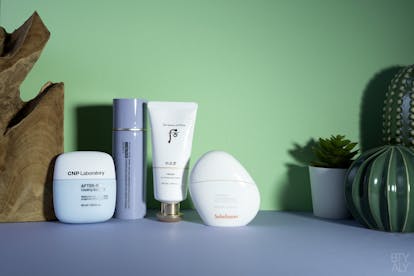


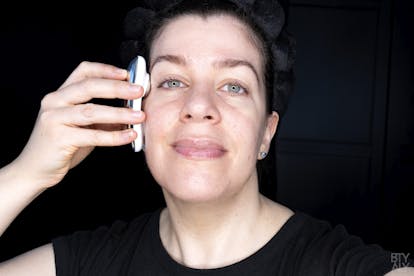
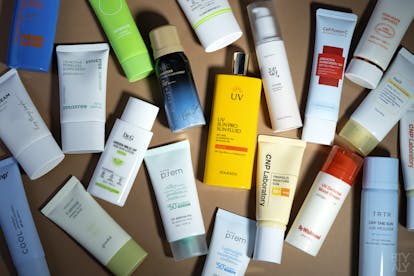

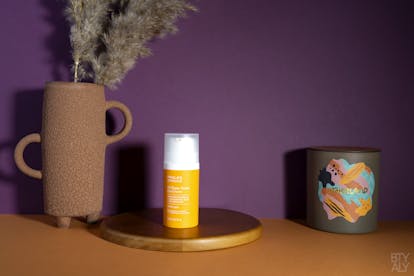
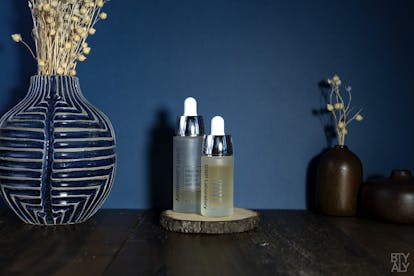
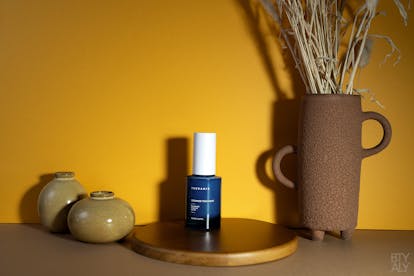
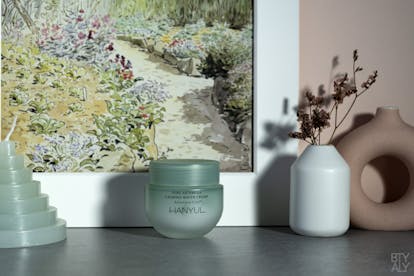

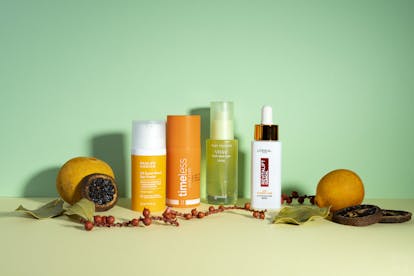

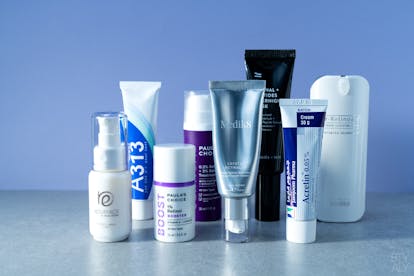
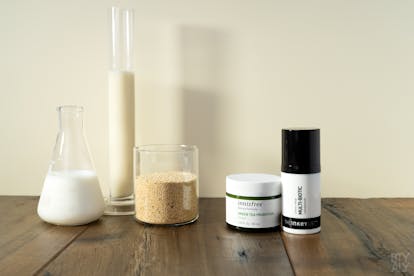
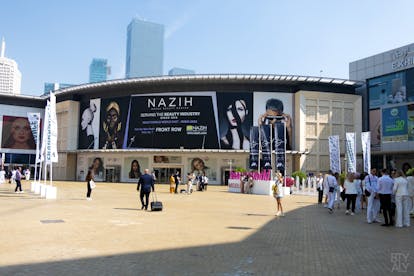
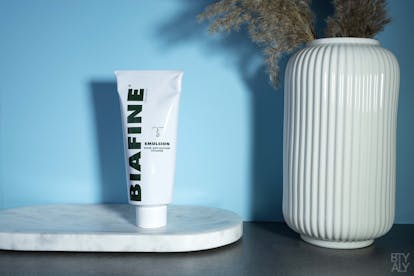

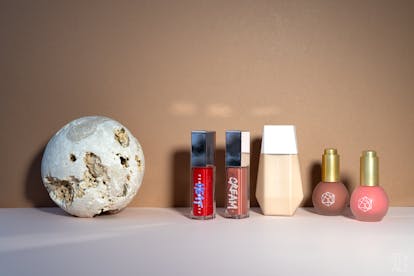
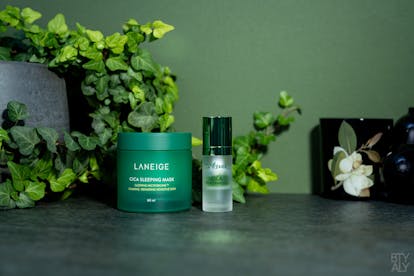
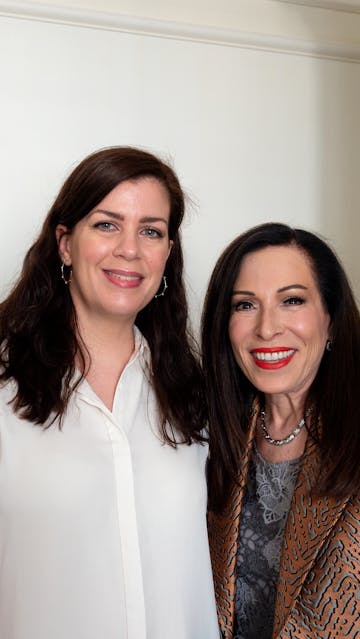
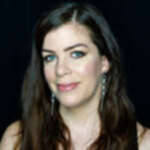
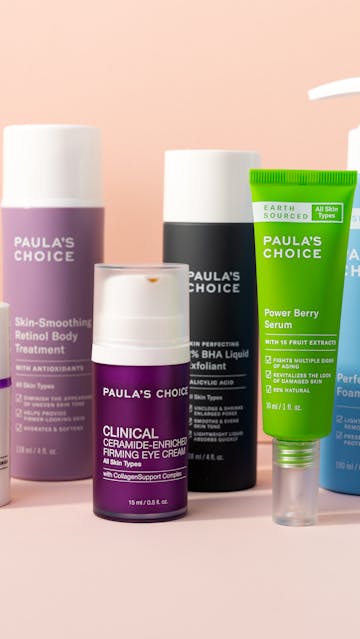
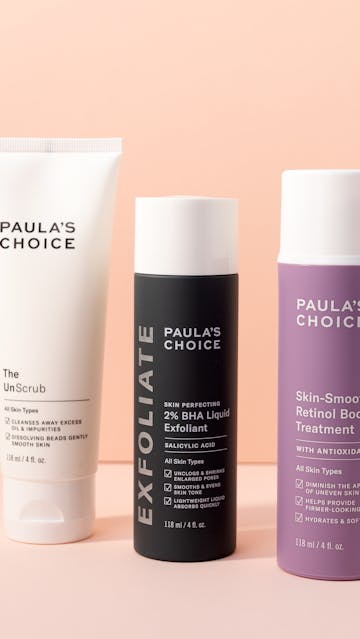
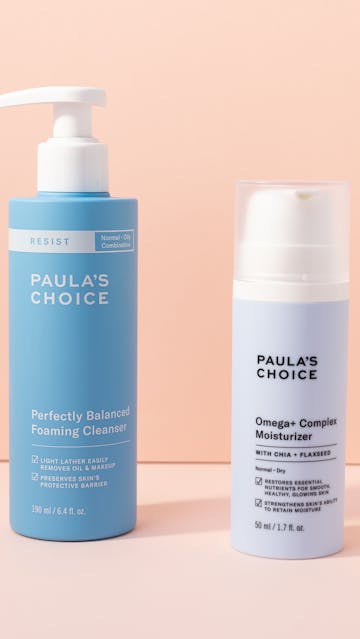
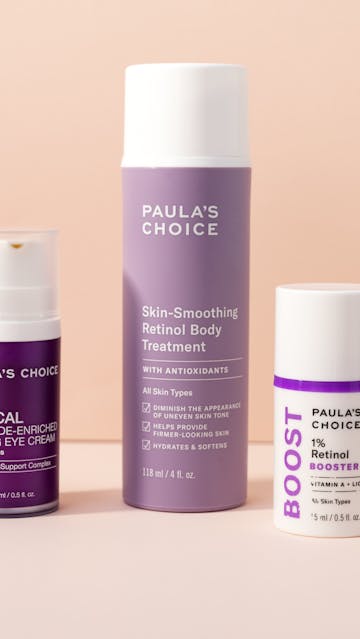

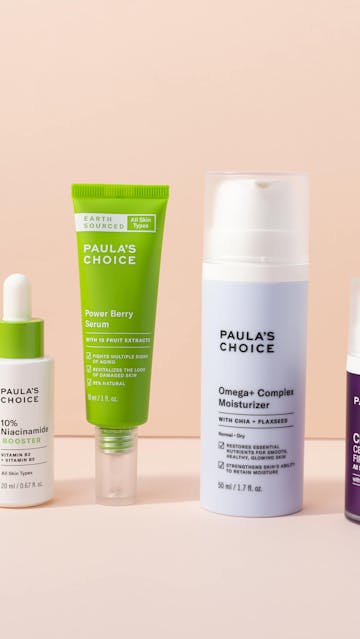

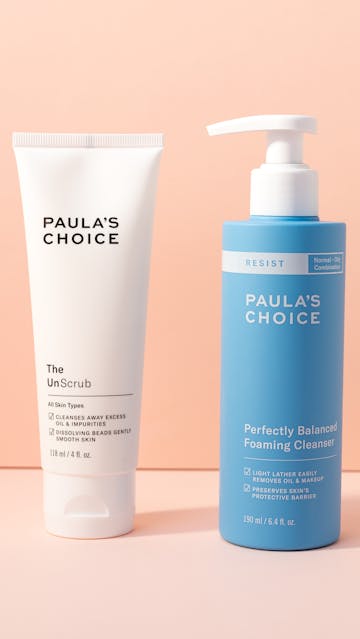
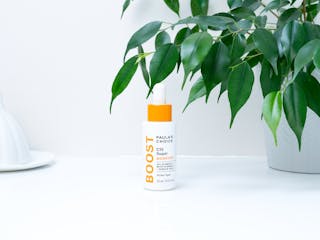










Wow thanks for sharing
This brings back memories, found the “Blue Eyeshadow Should be Illegal” book, probably my mums, in storage a long time ago and hadn’t realised that the Blue Shadow Paula and Paulas Choice Paula were one and the same until recently lol
I like to think she’s my cosmetic cop too, looking out for me and giving me guidance when others are looking to con me
Been using Paulas Choice products for yonks now, they are my staple products. Have to agree though, for a luxury “me” moment, I do tend to look elsewhere.
Yes, I know what you mean! I discovered Paula’s Choice products quite late, I must admit. In France, the products were not available until quite recently and in the UAE, you have to order them from the US, so not the easiest for the average consumer (obviously, I have my ways to order directly in the US, I’m a very motivated consumer ah ah ah)!
But all the products I tried so far are great. The Niacinamide Booster is now a staple in my skincare routine, I just love it so much!
I absolutely loved chatting with her, she’s just brutally honest and it’s incredibly refreshing! <3
Great article, Bonnie!! Thank you for sharing our story, we were all very impressed by the lovely event in Paris and the people we met, including you 🙂
Curious to know what you’ll think about the new products 😉
Xx
Fran
Hi Fran!
It was so nice to meet you all and to see how passionate you all are! Paula’s story is so fascinating, it was so interesting to hear, and my readers loved it!
I just started to use the new Power Berry Serum, so far so good! 🙂